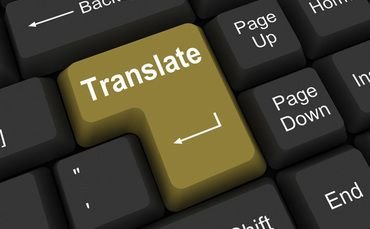Google Translate, one of Google’s many wonder children, offers free translations between 64 different languages and works in an instant. It seeks to make language translation and information universally accessible and for that it should be commended. It’s used by over 200 million people each month and is loved the world over. But how exactly does Google Translate it work, and can it be trusted?
How Google Translate Works
The creators of Google Translate clearly thought outside of the box when designing the system. Instead of using grammatical rule-based algorithms, Google Translate makes use of hundreds of millions of documents in different languages to try find the best translation. By using documents that were already created by humans, it hopes to make an intelligent guess at what the translation should be.
But, because essentially all translation is still done by machines, errors are still often made. The more documents the tool has access to the more accurate it is likely to be. Unfortunately this means that languages that don’t have a lot of readily available text online are likely to have weaker translations than others.
Google also doesn’t always directly translate from one language to another, but first translates into English and then into the target language. Sometimes this works better than others. Because English can often be ambiguous in its meaning and often relies on context, this very literal tool can often make mistakes and is also why you will often find grammatical errors when translating.
Why we Love Google Translate
Since its creation, Google Translate has brought people of different languages together in a way that has never been done before. It helps to eliminate language barriers by giving people the flexibility to communicate with anyone, no matter where they’re from.
It also has the potential to bridge cultures and provide services and information to speakers of minority languages and helps with basic translation.
We love Google Translate because we love languages. While it is not always 100% accurate, the tool gives people the chance to access languages they’ve never had access to before. You no longer have to speak to a professional or consult a thick dictionary to find out how to say ‘I love you’ to an Albanian woman or ‘nice to meet you’ to an Italian stranger.
Google Translate’s Limitations
While we love that Google Translate gives you the freedom of finding out words and phrases in other languages, it also has a lot of limitations. It can be great at helping a reader get the general gist of a phrase from another language but when it comes to accurate translation; it leaves something to be desired. Studies found that machine-based translation tools work best with short phrases or paragraphs, meaning that using Google Translate to translate an entire paper would probably not end well.
The high probability of it making mistakes means that it probably shouldn’t be trusted blindly. For people who know some of a language, it is easier to make sense of what Google Translate is trying to say, but as a rule of thumb it shouldn’t be trusted to make grammatically accurate translations in any situation.
Google Translate in the Professional World
Should Google Translate be used in the professional world? The short answer is no. It’s a fun tool that lets us communicate better, but there is no way it is reliable enough to use in business or for formal documents. Ikea found that out the hard way when a curious customer put its ‘Gosa Raps’ pillows into Google Translate and got out ‘cuddle rapes’.
This fact is even truer when it comes to technical industries such as law and medicine. Google Translate has a limit on the amount of technical terms it will translate in a given phrase, and for an industry that is full of them, this is useless.
Google Translate Versus Translations Agencies
Some may think that Google Translate is the enemy of all translations agencies, but that’s not strictly the case. Google and translations agencies have two very different roles. Where the tool can be used to find out words or phrases in languages, translations agencies offer fully certified document translations and interpretations.
Because agencies like Romo Translations have the benefit of being run by humans, we are able to pick up language subtleties and ambiguities which machine translators cannot. The major problem with machine translators is that they have no context to work off and without context you can never guarantee a perfect translation.
They also produce very literal translations, which can be a problem for languages that don’t translate well directly. This can lead to something ending up as complete gobbledygook in the target language.
In order to really be able to understand and translate for a language you have to have cultural awareness. Unfortunately this is something that Google Translate and other machine translators still lack.
For accurate document translations or interpretation in any language, contact Romo Translations.
